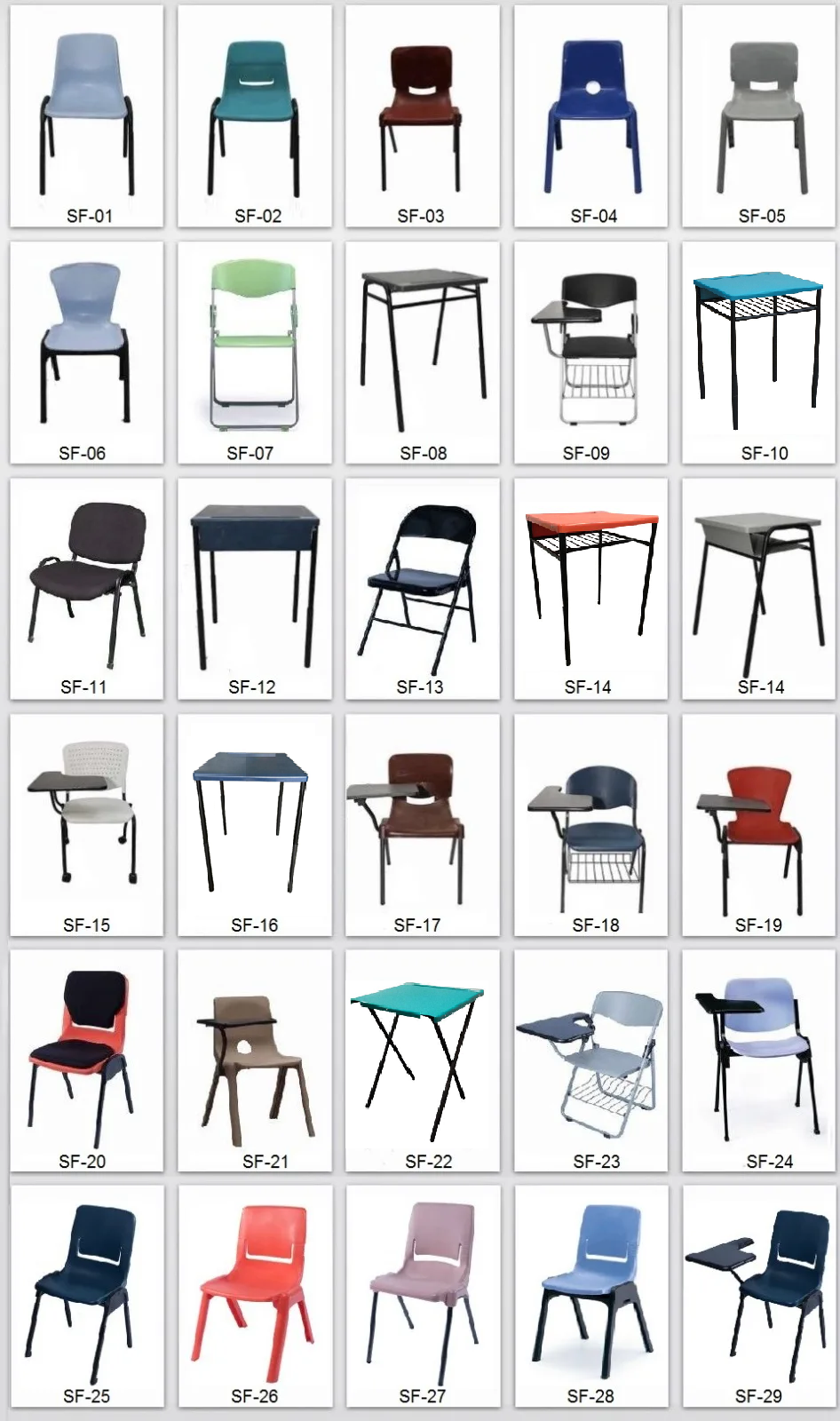The tone and feel of a learning environment is greatly influenced by the classroom furniture and design.
Children are especially reactive to their surroundings and will disconnect in an instant. So, it’s critical to engage them right away and provide a stimulating learning environment.
Classrooms have the advantage of being blank canvases, empty spaces to leave a lasting impact on the students.
It is critical that the furniture that occupies these spaces is precisely suited to its purpose—providing an environment that inspires productivity and maximizes potential.
The significance of school furniture cannot be overstated. It has a tremendous impact on the efficiency with which students learn.
What effect does school furniture have on learning?
The right school furniture, on the other hand, offer kids comfort, right posture, and support, all of which improves their capacity to concentrate and work.
This provides an opportunity for schools to boost student engagement by concentrating on furnishings.
High tables, sit-stand tables, and tilt tables have all been identified as useful learning aids.
How Can High-Quality School Furniture Help Students Learn?
From a young age, high-performing pupils require certain classroom furniture. In a recent UNESCO report, this point is highlighted aggressively.
It emphasizes the importance of lightweight seats and desks for primary kids. Lightweight school furniture makes switching between small group activities a breeze.
It’s a huge decision to think about updating your classroom furnishings. Furthermore, you must be aware of the advantages that appropriate furniture may provide.
Furniture in classrooms is not only an integral aspect of the classroom environment, but also a tool within classrooms.
As a result, it’s critical to understand not just how they can create productive learning environments, but also how they may enhance engagement in classrooms, as UNESCO indicated.
Above all, by being versatile, movable, and adaptable to a variety of scenarios, school furniture can have an impact on these variables.
Five Important Points to Consider When Planning for School Design
When planning the layout of future classrooms, keep these five points in mind:
- Exercise and movement spaces: To address this demand, it is critical to create free areas close or even within classrooms.
- Multipurpose tables: just like in offices, students should be able to choose how they use their tables and whether they may access them while sitting or standing.
- Gym equipment: an area (this time with tiny gym equipment) can be given to address the need for exercise or physical activity even more effectively.
- Places for students to write and debate their ideas: places for students to write and discuss their ideas are crucial.
- Wheeled furniture: tables and chairs with wheels provide quick and quiet adaptability. This advantage will be discussed later.
Factors to Consider When Buying New School Furniture
Here are eight important things to consider when buying new classroom furniture:
Think about the student’s comfort
First and foremost, if you want to get your school furnishing off to a good start, you should think about how comfy each piece of furniture is before purchasing it.
Students’ comfort is a top priority—you wouldn’t want to sit in an uncomfortable seat for eight hours or more, so don’t put them in uncomfortable seats.
Find furniture that everyone, regardless of body type or height, would enjoy sitting in. It’s a good idea to start looking for desks and chairs that aren’t attached, especially if they’re part of a set.
In a classroom, providing a choice of seating alternatives can ensure that every student has a comfortable place to sit and learn.
It’s about safety and health too
In an unsafe classroom, even the finest teachers will struggle to engage kids successfully. As a result, student safety is at the top of our priority list.
Furniture should not only be durable (i.e., pupils should not be able to simply tip over chairs), but it should also be made of non-toxic materials.
Locate areas for a lounge or study
It is critical in middle and high schools to provide peaceful study rooms for students. Some students learn better in a classroom setting.
Students will be able to bunker down and look over their work if they have a spot to sit and focus on their notes away from the busiest areas of the school.
Install a booth nook with a table that can seat many students to allow students to work on group projects in a location other than the library.
Students will appreciate the added comfort of dedicated study spaces, whether they use them during study hall or when school is not in session.
Invest in ergonomics
The importance of excellent ergonomics in the classroom cannot be overstated. Students come in many shapes and sizes, and it’s critical to value their differences.
Desks and chairs are adjustable in height to accommodate the differences in height between pupils.
Don’t mix and match your furniture
It’s not enough to make a comfortable school atmosphere; you also have to think about how visual appeal influences kids’ comfort.
Matching the colors, styles, and sizes of the furniture you choose is an important part of completing the school’s décor.
Mismatched furniture can detract from your design while also increasing the stress levels of your students.
Furthermore, mismatched furniture can result in products that are difficult to use in the classroom.
For example, a table with a chair that doesn’t fit well with it can cause a student to sit at the table with poor posture.
Sitting at the table for an extended period of time on an ill-fitting chair might cause back pain or discomfort.
Don’t overlook flexibility
There has been a shift toward flexible workstations in the business and in the classroom.
People learn (and work) best in a variety of environments, and what works well for one may not work well for another.
Consider a diversity of furniture instead of buying identical pieces for each student.
For many people, a classically formed desk and chair will suffice.
Some students, on the other hand, require more movement and fidgeting, in which case bouncy or tilting chairs will aid attention.
Allowing kids to choose their own furnishings gives them more control over how they learn.
Pay heed to special-needs students
Accommodations for children with mental or physical disabilities should not be limited to passing period extensions or homework assistance.
You should consider these students as you furnish the school and plan the layout.
Creating an accessible school begins with properly spacing furniture away to allow wheelchairs to travel through comfortably, adding softer lighting, and giving classrooms with soft furniture options.
Before you go out and buy furniture, ask students who need special accommodations what they think the school needs.
They can ask for wheelchair-accessible desks or stools that allow them to fidget while paying attention in class.
There are many creative furniture solutions that can help kids learn more effectively; all you have to do is provide them for your students.
Mobility and usability
Educators today do not spend the entire day instructing their students (while expecting them to sit still and listen).
Rather, they actively include their students in the learning process to foster engaged learning.
The classroom may change from a historic battleground to a boardroom to a science lab to a typical classroom in the span of an hour.
With this in mind, classroom furniture should be able to effortlessly transfer and reconfigure between lessons.
Helpful Tips for Choosing the Right School Furniture
These tips will help you in choosing the right furniture:
Be aware of what you’re buying
Are the goods you’re thinking about buying built to handle the demands of today’s classrooms?
Or were they intended to be used as offices? Let’s face it, children are rough on furniture, and learning spaces have their own set of issues.
Make your you ask yourself these questions before completing your order for school furniture:
- Is the furniture up to your standards in terms of durability, upkeep, and long-term use?
- Is the product design geared toward lively classrooms or all-day sitting and/or meetings?
- How long has the furniture company been in business?
When making a large purchase, we all want to know that we can rely on the company’s experience and stability.
The majority of schools want their classroom furniture to last for many years (if not decades). And you should too!
Be aware of your price point
It’s critical to assess your school furniture budget as responsible stewards of taxpayer funds. “Value” is determined by factors other than cost, much as it is when purchasing a car.
Make sure you put your money where it counts. Inquire about strategies to conserve money in one area so that you can put money into other areas.
Demand that your vendors present you a variety of solutions for meeting the needs of your various learning programs.
When making a purchase, keep these two facts in mind:
“Best” does not always imply “highest” price.
“Lowest price” does not always imply “bad quality”.
Preventing buyer disappointment
Investigate the makers of the products you want to buy. Warranties, certifications, and furniture testing processes will all be available on websites.
If a product is damaged in transit or fails, your furniture dealer or manufacturer representative can explain the replacement and repair process.
Whether you engage with a local furniture dealer or go straight to the manufacturer, the level of support you can expect may vary.
Pay attention to the manufacturing location of the product. Is it crucial for you to buy “made in Singapore” in your community?
If that’s the case, see if the school furniture you’re contemplating is made in Singapore, assembled in Singapore, or warehoused in Singapore.
Lead times, replacement components, and freight/shipping prices can all be affected by where your school furniture is made!
Furniture Options
The type of students who will be studying in the classroom and the type of instruction that will be given in the classroom will determine the furniture that will be used.
Let’s take a quick look at the various furniture possibilities.
Chair
A single bespoke chair will not meet the needs of every student. The classroom should have a variety of different forms of seating and accommodations.
Many classroom furniture companies today perform wonders in redefining and transforming the original classroom style.
Every child in their classroom has a variety of alternatives open to them, including:
- Bouncy chairs
- Decorative cushions
- Bean bag chairs
- Rocker seats
Desk
Visualize a conventional classroom transformed into a study environment with yoga mats as seating, windows as writing boards, and cushions.
Adjustable movement-based classes, on the other hand, will be the future of the traditional classroom.
Even yet, the necessity for school desks will never go away, and numerous workstations can accommodate a variety of sizes, shapes, and patterns, as well as the ability to modify and reconfigure them.
Purchasing The Right School Furniture to Transform Learning
In any classroom, student instruction will take precedence, but that doesn’t mean an investment in suitable seating should be overlooked.
When choosing the right furnishings for a school, everyone should prioritize value because it can help pupils learn more effectively.
It will be difficult to transform learning by changing the learning environment, but you should know that you are not alone.
Heat Office offers a variety of school furniture, ranging from ergonomic desks to executive chairs and all in between.
We’re here to help you on your way to transforming education!
Related blog: What Is the Impact of Office Furniture on Productivity?







